Table of Contents
Come join us now, and enjoy playing your beloved music and browse through great scores of every level and styles!
Can’t find the songbook you’re looking for? Please, email us at: sheetmusiclibrarypdf@gmail.com We’d like to help you!
Remembering Oscar Peterson, born on this day in 1925 (1925-2007).
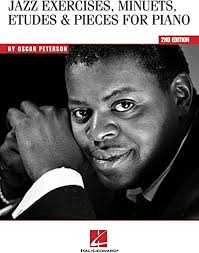
Best Sheet Music download from our Library.

Please, subscribe to our Library.
If you are already a subscriber, please, check our NEW SCORES’ page every month for new sheet music. THANK YOU!
Oscar Peterson: The Velvet Thunder of Jazz Piano
Oscar Emmanuel Peterson stands as one of the most commanding, technically awe-inspiring, and profoundly influential figures in the history of jazz piano. His career spanned over six decades, leaving an indelible mark not just through his virtuosic speed and power – earning him nicknames like “The Maharaja of the Keyboard” and “The Man with Four Hands” – but through his deep swing, harmonic sophistication, melodic inventiveness, and unwavering dedication to the art form. To explore Peterson is to delve into the very heart of jazz piano evolution in the 20th century.


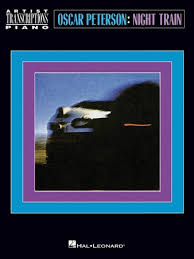



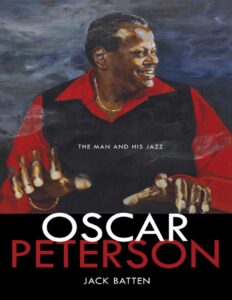



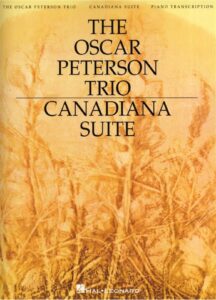
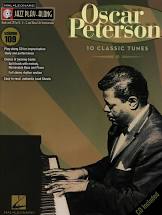

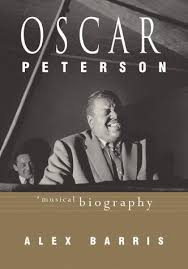

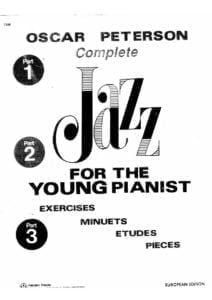

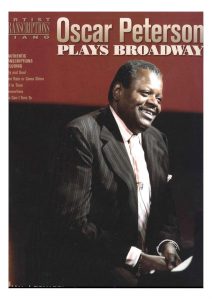
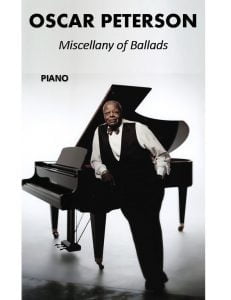
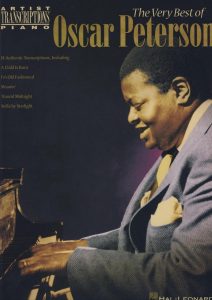

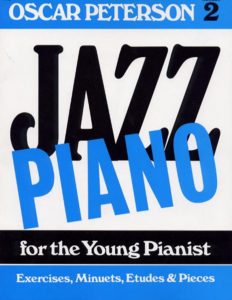
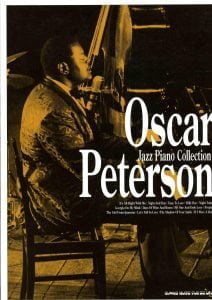

Browse in the Library:
Or browse in the categories menus & download the Library Catalog PDF:
I. Biography: From Montreal’s Little Burgundy to Global Acclaim
- Early Years (1925-1945): Born on August 15, 1925, in Montreal, Quebec, Canada, Oscar Peterson was the fourth of five children to West Indian immigrant parents. His father, Daniel Peterson, a porter for the Canadian Pacific Railway, was a strict disciplinarian and amateur trumpeter who insisted all his children learn music. Oscar initially studied trumpet and piano but focused solely on piano after a bout of tuberculosis weakened his lungs at age seven.
- Formative Training: His first teacher was his sister Daisy, a classical pianist. He later studied with Paul de Marky, a Hungarian-born pianist who instilled in him a formidable classical technique, heavily influenced by Franz Liszt and Sergei Rachmaninoff. This rigorous classical foundation became the bedrock upon which his jazz prowess was built. Simultaneously, Peterson immersed himself in the jazz emanating from records and the vibrant Montreal scene, particularly influenced by the stride piano of Art Tatum, Teddy Wilson, and Nat King Cole.
- The Norman Granz Discovery (1949): Peterson was already a star in Canada, performing regularly on radio and leading his own trio. His breakthrough onto the international stage came dramatically in 1949. Jazz impresario Norman Granz, founder of Verve Records and the “Jazz at the Philharmonic” (JATP) tours, heard Peterson playing on a Canadian radio broadcast. Mistakenly thinking it was a record, Granz demanded the taxi driver take him to the club immediately. Upon discovering it was live, Granz was astounded and immediately invited Peterson to appear at Carnegie Hall in New York as a surprise guest at a JATP concert. His performance that night, particularly his dazzling solo on “Tenderly,” caused a sensation, announcing his arrival to the world.
- The Trio Years – Golden Eras: Granz became Peterson’s manager and producer for most of his career. Peterson formed his first iconic trio in 1951 with bassist Ray Brown and guitarist Barney Kessel. This group epitomized swing and interplay. In 1953, Kessel was replaced by Herb Ellis, solidifying what many consider the classic Oscar Peterson Trio (1953-1958). The synergy between Peterson, Brown, and Ellis was legendary – telepathic communication, relentless swing, and thrilling exchanges. When Ellis left, Peterson experimented briefly with a quartet before settling back into the trio format, replacing the guitar with a drummer. This led to the equally revered trio with Ray Brown and drummer Ed Thigpen (1959-1965). This trio refined the sound, with Thigpen’s sensitive yet driving drumming providing a perfect foil. After Brown and Thigpen departed, Peterson worked with various bassists and drummers, including Sam Jones, Louis Hayes, Bobby Durham, Niels-Henning Ørsted Pedersen (NHØP), Joe Pass, and Martin Drew. His duo collaborations, particularly with bassists NHØP and Ray Brown, and guitarist Joe Pass, are also landmarks.
- Later Career and Legacy (1965-2007): Peterson continued to perform and record prolifically throughout his life. He suffered a stroke in 1993 that weakened his left hand, but his determination led him to retrain and return to performing, albeit with adjusted technique, focusing even more on his formidable right hand and harmonic brilliance. He remained a revered elder statesman of jazz, receiving countless awards and honors, including eight Grammy Awards (plus a Lifetime Achievement Grammy), the Order of Canada (Companion), and numerous honorary doctorates. Oscar Peterson passed away on December 23, 2007, in Mississauga, Ontario, leaving behind an unparalleled recorded legacy and generations of inspired musicians.
II. Music Style: The Anatomy of Velvet Thunder
Peterson’s style was a monumental synthesis:
- Foundational Virtuosity: His classical training endowed him with:
- Unmatched Speed and Dexterity: Blindingly fast runs executed with astonishing clarity and evenness.
- Formidable Power: A massive, orchestral sound capable of filling any hall without amplification, yet capable of exquisite softness.
- Technical Control: Flawless articulation, finger independence, and dynamic range.
- Swinging Groove: At his core, Peterson was a master swinger. His time feel, deeply rooted in the blues and stride tradition, was propulsive and infectious. He could generate immense momentum and lock perfectly with his bassist and drummer.
- Harmonic Sophistication: Peterson possessed an encyclopedic knowledge of harmony:
- Rich Chord Voicings: He employed lush, complex voicings, often using close-interval structures (like block chords) and intricate inner movements.
- Advanced Substitutions: He constantly reharmonized standards on the fly, using tritone substitutions, altered dominants, extended chords (9ths, 11ths, 13ths), and chromatic passing chords to create constant harmonic interest and tension/release.
- Counterpoint: He frequently wove intricate melodic lines between his hands, creating a rich tapestry of sound.
- Orchestral Approach: Peterson treated the piano like an orchestra. He didn’t just play melodies and chords; he created textures, backgrounds, and full arrangements spontaneously. His left hand wasn’t just timekeeping; it provided bass lines, countermelodies, and harmonic pads simultaneously.
- Blues Inflection: Despite his technical prowess, the blues feeling was never far away. His phrases often bent and groaned with blue notes, grounding his complexity in deep emotion.
- Bebop Fluency: He seamlessly integrated the harmonic and melodic language of bebop – complex chord changes, fast scalar runs, and angular lines – into his playing, but always filtered through his own powerful, swinging sensibility.
III. Improvisational Licks and Language: Building Blocks of Genius
While Peterson’s solos were often vast, complex structures, they were built from identifiable vocabulary:
- Scalar Mastery: Lightning-fast runs based on major, minor (dorian, melodic, harmonic), blues, pentatonic, and bebop scales. He often used “enclosure” techniques – surrounding a target note with chromatic approaches above and below – for bebop-style articulation.
- Arpeggiation: Sweeping arpeggios through complex chord changes were a staple, showcasing his harmonic understanding and dexterity. He could arpeggiate extended chords (9ths, 11ths, 13ths) effortlessly.
- Octave Displacement: Playing melodic ideas displaced by an octave (or two) for dramatic effect and to cover the entire range of the keyboard.
- Sequencing: Repetition of a short melodic motif transposed up or down through a scale or chord progression.
- Block Chord Style (Locked Hands): Inspired initially by Milt Buckner and refined by George Shearing, Peterson mastered this technique where both hands play chords in parallel motion, creating a rich, horn-like sound. He used variations:
- Shearing-style: Melody note doubled in octaves in the right hand, filled with inner chord tones, harmonized by the left hand.
- Tatum-style: More complex inner voice leading within the block structure.
- “Fast Locked Hands”: Rapid-fire block chord passages, often chromatically descending, creating a cascading effect (e.g., his famous intro to “Satin Doll” on the Nigerian Marketplace album).
- Walking Bass Lines: In solo piano or when comping for himself, his left hand would often lay down a walking bass line worthy of the greatest bassists, while his right hand improvised melody or chords.
- Stride Elements: While not primarily a stride pianist, he incorporated powerful left-hand stride patterns (bass note on 1 & 3, chord on 2 & 4) for rhythmic drive and homage to his roots, especially in up-tempo numbers or blues.
- Call and Response: Between his hands, or trading phrases with his bassist or drummer.
- Quotation: Clever and often humorous interpolation of fragments from other well-known melodies within his solos.
IV. Chord Progressions and Harmonic Concepts: Reharmonization Royalty
Peterson was a master of transforming standard chord progressions. His harmonic approach was central to his improvisational and accompanying style:
- Tritone Substitution: His signature move. Replacing a dominant 7th chord (e.g., G7) with the dominant 7th chord a tritone away (Db7). This creates a chromatic bass line (G to Db) and allows for altered tensions (b9, #9, #11, b13) to resolve chromatically. Ubiquitous in his playing on II-V-I progressions (e.g., Dm7 | Db7 | Cmaj7 instead of Dm7 | G7 | Cmaj7).
- Backcycling: Using a series of secondary dominants (chords that resolve down a 5th) to approach a target chord chromatically or diatonically. He could extend these cycles dramatically.
- Altered Dominants: Extensive use of altered tensions (b9, #9, #11, b13) on dominant 7th chords to increase tension and create more colorful resolutions. He often combined tritone subs with alterations.
- Extended and Altered Harmony: Standard triads and 7th chords were just the starting point. 9ths, 11ths, 13ths, and alterations were the norm in his chord voicings and improvisational language. He favored rich, close-voiced chords in the middle register.
- Modal Interchange (Borrowing Chords): Incorporating chords from the parallel minor (or other modes) into a major key progression for color (e.g., using a iv minor chord (Fm) in the key of C major).
- Diminished & Augmented Chords: Using passing diminished chords and augmented chords for chromatic movement and tension.
- Reharmonizing Melodies: Applying these techniques not just in solos, but in the very way he presented a melody, instantly giving a standard a fresh, sophisticated harmonic context. His introductions often set the stage with complex reharmonizations.
V. Influences: The Pillars of His Artistry
Peterson openly acknowledged his giants:
- Art Tatum: The most profound influence. Tatum’s supernatural technique, harmonic daring, orchestral conception, and ability to completely reimagine a song were Peterson’s north star. He often said listening to Tatum initially made him want to quit piano, but then became his ultimate inspiration.
- Teddy Wilson: A model of elegance, swing, and clean, lyrical single-note lines within the swing idiom.
- Nat King Cole: Influential both as a pianist (his trio format, touch, and melodic lyricism) and as a singer (Peterson occasionally sang, often in Cole’s style).
- Bud Powell: Absorbed Powell’s bebop language – the angular lines, rhythmic drive, and harmonic approach – integrating it into his own more orchestral style.
- Erroll Garner: Garner’s joyous swing, unique rhythmic feel (anticipation), orchestral approach, and use of block chords resonated with Peterson.
- Classical Composers: Rachmaninoff (power, romanticism), Liszt (virtuosity, technique), Bach (counterpoint, structure), and Debussy (harmony, color) were frequently cited influences informing his technique and harmonic palette.
VI. Legacy: The Enduring Colossus
Peterson’s impact is immeasurable:
- Technical Benchmark: He set a new, almost superhuman standard for technical fluency and power on the jazz piano, inspiring awe and pushing generations of pianists to hone their craft.
- Trio Innovation: His trios with guitar/bass and bass/drums are among the most influential small groups in jazz history, defining the modern piano trio concept focused on egalitarian interplay and virtuosic communication. Countless trios model themselves on his formats.
- Harmonic Masterclass: His advanced harmonic vocabulary and reharmonization techniques became essential study material for jazz musicians of all instruments, fundamentally expanding the harmonic language of mainstream jazz.
- Global Ambassador: As a cornerstone of Norman Granz’s JATP tours and through his own relentless touring, he brought jazz to massive audiences worldwide for decades, promoting racial integration on stage long before the Civil Rights Movement peaked.
- Pedagogue: Though less formal than some, his playing itself was a masterclass. He also composed educational works (“Jazz Exercises and Pieces”) and mentored younger musicians.
- Canadian Icon: He is arguably Canada’s most celebrated and internationally recognized musician, a source of immense national pride. His name adorns concert halls, schools, and stamps.
- Inspiration: His passion, dedication, work ethic, and triumphant return after his stroke serve as an inspiration far beyond music. His sheer joy in playing was contagious.
VII. Works: Beyond Interpretation
While primarily known as an interpreter of the Great American Songbook and jazz standards, Peterson was also a significant composer:
- “Hymn to Freedom” (1962): His most famous composition, written during the Civil Rights Movement. It became an anthem for freedom and equality worldwide. A beautiful, gospel-tinged ballad showcasing his harmonic depth and melodic grace.
- “Canadian Suite” (1964): A suite of pieces celebrating different regions of Canada, demonstrating his compositional range and national pride.
- “Nigerian Marketplace” (1981): Title track from a Grammy-winning album, blending jazz with Afro-Caribbean rhythms.
- “Jazz Exercises and Pieces” (1960s): Educational compositions designed to develop jazz technique and vocabulary.
- “The Trail of Dreams: A Canadian Suite” (2000): A later large-scale suite commissioned for the Millennium.
- Numerous other compositions, including “Blues Etude,” “Wheatland,” “Place St. Henri,” “Sally’s Tomato,” and “Nighttime.”
VIII. Filmography: Capturing the Genius
Peterson appeared in numerous films and documentaries, primarily capturing live performances:
- Jazz at the Philharmonic footage: Numerous concerts from the 1950s onwards were filmed, including iconic performances with Ella Fitzgerald, Dizzy Gillespie, Lester Young, and his own trio.
- The Sound of Jazz (1957): Legendary CBS TV special featuring Count Basie, Billie Holiday, Thelonious Monk, etc. Peterson performs solo and with Coleman Hawkins.
- Big Blues (1973): Documentary featuring Peterson and Joe Pass.
- Oscar Peterson: Music in the Key of Oscar (1992): Major documentary celebrating his life and career.
- Oscar Peterson: Keeping the Groove Alive (2005): Documentary filmed shortly before his stroke.
- Oscar Peterson: The Life of a Legend (2004): Comprehensive documentary biography.
- Countless CBC (Canadian Broadcasting Corporation) television appearances, concerts, and interviews spanning his entire career.
IX. Discography: A Monumental Output (Selective Landmarks)
Recording primarily for Norman Granz’s labels (Clef, Norgran, Verve, Pablo), Peterson’s discography is vast. Here are essential entries:
- With the Classic Trio (Ray Brown & Herb Ellis):
- At the Stratford Shakespearean Festival (1956)
- At Zardi’s (1955, released later)
- At the Concertgebouw (1957)
- Oscar Peterson Plays The Cole Porter Songbook (1959)
- With the Trio (Ray Brown & Ed Thigpen):
- Night Train (1962) – Arguably his most famous album.
- West Side Story (1962)
- The Trio Live from Chicago (1961)
- We Get Requests (1964)
- Solo Piano:
- Tracks (1970)
- Exclusively for My Friends series (MPS, 1963-1968) – Multiple volumes of sublime solo and trio performances.
- My Favorite Instrument (1981)
- Duos:
- Oscar Peterson & Nelson Riddle (1963)
- The Good Life (with Joe Pass, 1973)
- Porgy and Bess (with Joe Pass, 1976)
- Oscar Peterson & Roy Eldridge (1974)
- Oscar Peterson & Clark Terry (1975)
- Oscar Peterson & Count Basie (1974)
- Oscar Peterson & Niels-Henning Ørsted Pedersen (Multiple Pablo albums in the 1970s)
- With Quartet:
- Oscar Peterson + One (with Clark Terry, 1964)
- Oscar Peterson & The Trumpet Kings – Jousts (1974 – with Dizzy Gillespie, Roy Eldridge, Clark Terry)
- Later Landmarks:
- The Trio (with Joe Pass & Niels-Henning Ørsted Pedersen, 1973)
- Nigerian Marketplace (1981 – Grammy Winner)
- A Tribute to My Friends (1983)
- Time After Time (with NHØP, Joe Pass, Martin Drew, 1986)
- Oscar in Paris (1996 – Live after stroke)
- A Night in Vienna (2004 – with NHØP, Ulf Wakenius, Martin Drew)
X. Most Known Compositions and Performances
- Compositions:
- “Hymn to Freedom” (Iconic anthem)
- “Nigerian Marketplace” (Grammy-winning title track)
- “Place St. Henri” (From Canadian Suite)
- “Blues Etude”
- “Wheatland”
- Definitive Interpretations/Performances:
- “C Jam Blues” (Countless versions, showcasing trio interplay and solos)
- “Night Train” (The definitive version, title track of iconic album)
- “Hymn to Freedom” (Profound solo and trio versions)
- “Tenderly” (The solo that launched his international career at Carnegie Hall ’49)
- “Satin Doll” (Often featuring his famous “fast locked hands” intro)
- “Sweet Georgia Brown” (Showcase for blinding speed and stride roots)
- “You Look Good to Me” (Trio classic, often featuring Ray Brown’s bass)
- “Misty” (Countless beautiful ballad interpretations)
- “Body and Soul” (Deep harmonic exploration)
- His collaborations with Ella Fitzgerald (Songbook series), Louis Armstrong, Dizzy Gillespie, Roy Eldridge, Clark Terry, and Ben Webster on numerous JATP recordings and albums.
Oscar Peterson: The Incomparable Force
Oscar Peterson was not merely a pianist; he was a force of nature. His music combined Herculean technique with profound swing, harmonic genius, and an infectious joy. He could overwhelm with sheer power or captivate with delicate lyricism. He took the piano trio to unprecedented heights of cohesion and virtuosity. He redefined harmonic possibilities within mainstream jazz. He inspired countless musicians and brought jazz to millions.
While critics occasionally noted his technical brilliance could overshadow emotional depth in some moments, the sheer consistency, invention, and communicative power of his six-decade career remain unparalleled. He was, quite simply, one of the greatest pianists – in any genre – to ever touch the instrument. The velvet thunder of his piano continues to resonate, a timeless testament to the boundless possibilities of jazz artistry.
Oscar Peterson Instruments
Bösendorfer pianos – 1980s and 2000s, some performances from the 70s onward.
Yamaha – Acoustic and Disklavier; used from 1998 to 2006 in Canada (Touring and Recording)
Steinway & Sons Model A (which currently resides at Village Studios in Los Angeles) – most performances from the 1940s through the 1980s, some recordings.
Baldwin pianos – some performances in the US, some recordings.
C. Bechstein Pianofortefabrik pianos – some performances and recordings in Europe.
Petrof pianos – some performances in Europe.
Clavichord – on album Porgy and Bess with Joe Pass
Fender Rhodes electric piano – several recordings.
Synthesizer – several recordings.
Hammond organ – some live performances and several recordings.
Vocals – some live performances and several recordings.Oscar Peterson discography
Awards and honours
Grammy Awards
1975: Best Jazz Performance by a Group The Trio
1977: Best Jazz Performance by a Soloist The Giants
1978: Best Jazz Instrumental Performance, Soloist Oscar Peterson Jam – Montreux '77
1979: Best Jazz Instrumental Performance, Soloist Oscar Peterson and The Trumpet Kings – Jousts
1990: Best Jazz Instrumental Performance, Group Live at the Blue Note
1990: Best Jazz Instrumental Performance, Soloist The Legendary Oscar Peterson Trio Live at the Blue Note
1991: Best Jazz Instrumental Performance, Group Saturday Night at the Blue Note
1997: Lifetime Achievement Award Instrumental Soloist Lifetime AchievementOther awards
A statue of Oscar Peterson was unveiled by Queen Elizabeth II at the National Arts Centre in Ottawa in June 2010.
Pianist of the year, DownBeat magazine, 1950, and won again for the next 12 years
Order of Canada, Officer, 1972; Companion, 1984
Canadian Version of the Queen Elizabeth II Silver Jubilee Medal, 1977
Canadian Music Hall of Fame, 1978
Martin Luther King Jr. Achievement Award, Black Theatre Workshop, 1986
Roy Thomson Award, 1987
Toronto Arts Award for lifetime achievement, 1991
Governor General's Performing Arts Award, 1992
Order of Ontario, member 1992
125th Anniversary of the Confederation of Canada Medal, 1992
Glenn Gould Prize, 1993
International Society for Performing Artists award, 1995
Loyola Medal of Concordia University, 1997
Praemium Imperiale World Art Award, 1999
Oscar Peterson Concert Hall named at Concordia University, 1999
UNESCO Music Prize, 2000
Toronto Musicians' Association Musician of the Year, 2001
Canadian Version of the Queen Elizabeth II Golden Jubilee Medal, 2002
SOCAN Special Achievement Award, 2008
Canada's Walk of Fame, 2013
Canadian Jazz and Blues Hall of Fame
Juno Award Hall of Fame
BBC Radio Lifetime Achievement Award
National Order of Quebec, Chevalier
Ordre des Arts et des Lettres, France
Civic Award of Merit, City of Mississauga, 2003
Oscar Peterson Theatre, Canadian Embassy, Tokyo, Japan, 2007
Oscar Peterson Hall, University of Toronto Mississauga, 2008
Oscar Peterson Public School, Stouffville, 2009
Parc Oscar-Peterson, Little Burgundy, Montreal, renamed in Peterson's honour 2009
Statue of Oscar Peterson unveiled in Ottawa by Queen Elizabeth II, 2010
Jazz Born Here, mural by Gene Pendon depicting Oscar Peterson, at Rue Saint-Jacques and Rue des Seigneurs in Montreal
Historica Canada Heritage Minute, 2021
Honorary degrees from Berklee College of Music, Carleton University, Queen's University, Concordia University, Université Laval, McMaster University, Mount Allison University, Niagara University, Northwestern University, University of Toronto, University of the West Indies, University of Western Ontario, University of Victoria, and York University
(Announced) Public square to be named in honour of Oscar Peterson, Montreal, 2021Music of Canada
Search your favorite sheet music in the category of Jazz, Blues, Soul, & Gospel.
Oscar Peterson, Ben Webster – During This Time (Full Live Concert Video)
Setlist
- Poutin‘ 0:00:00
- Sunday 0:08:55
- I Got It Bad And That Ain’t Good 0:16:11
- Perrdido 0:23:54
- Come Sunday 0:31:59
- For All We Know 0:39:37
- Cotton Tail 0:50:20
- Ben’s Blues 0:57:20
Line Up
Oscar Peterson, Piano
Ben Webster,, Tenor Saxophone
Niels-Henning Ørsted Pedersen, Bass
Tony Inzalaco, Drums
Recorded December 14th 1972 at the 84th NDR Jazzworkshop in Studio II, Hannover, Germany.
The Oscar Peterson Trio – In Tokyo, 1964
Tracks:
Record I
A1 Reunion Blues 00:00
A2 At Long Last Love 08:26
A3 I Remember Clifford 14:21
B1 Bags Groove 23:28
B2 Maidens Of Cadiz 31:17
B3 Tangerine 38:06
B4 Like Someone In Love 42:18
Record II
A1 Satin Doll 47:23
A2 Tricotism 53:19
A3 It Ain’t Necessarily So 01:01:48
A4 I Loves You Porgy 01:05:41
B1 Tonight 01:13:02
B2 Fly Me To The Moon 01:16:00
B3 Somewhere 01:20:25
B4 Yours Is My Heart Alone 01:28:42
B5 Hymn To Freedom 01:34:31
Credits:
Piano – Oscar Peterson
Bass – Ray Brown
Drums – Ed Thigpen
Recorded June 2, 1964 at the Sankei Hall in Tokyo.
